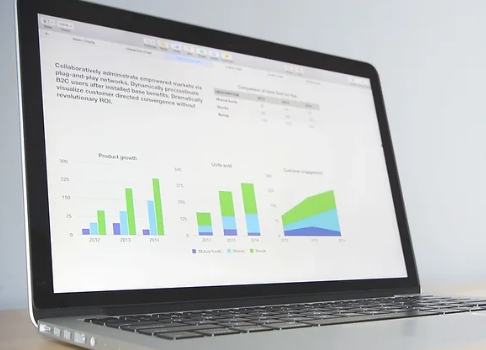
Carbon accounting, the process of measuring and managing greenhouse gas emissions, has become an essential practice for businesses looking to reduce their environmental impact. In this guide, we’ll explore the basics of carbon accounting, its importance for businesses, and how it can contribute to a more sustainable future.
Key Points to Understand Carbon Accounting:
- Carbon accounting helps businesses measure and manage their greenhouse gas emissions to evaluate their environmental impact.
- Understanding and reducing your carbon footprint is crucial for sustainability and compliance with environmental regulations.
- It includes tracking direct and indirect emissions (Scope 1, 2, and 3), setting reduction goals, and utilizing carbon credits for offsetting unavoidable emissions.
- Embracing carbon accounting provides opportunities for market differentiation and aligns your business with sustainability goals.
What Is Carbon Accounting?
Carbon accounting refers to the process of quantifying and reporting the amount of greenhouse gases (GHGs) emitted by an organization, often expressed as CO2 equivalents (CO2e). It helps businesses assess their contribution to climate change and develop strategies to reduce their emissions. By using both spend-based and activity-based data, carbon accounting not only ensures compliance with environmental regulations but also identifies areas for operational improvements and cost savings.
In today’s environmentally-conscious market, carbon accounting has become more than just a regulatory requirement. It serves as a strategic tool that can enhance an organization’s sustainability performance and foster innovation in products, services, and processes aimed at reducing emissions.
The Importance of Carbon Accounting
Carbon accounting allows organizations to assess their climate impact and set tangible goals for emissions reductions. Just as financial accounting is crucial for understanding a company’s economic health, carbon accounting is vital for understanding its environmental footprint. Implementing a robust carbon accounting system helps businesses reduce their impact on the environment, enhance their brand, and meet sustainability goals.
It also supports compliance with evolving regulatory frameworks and reporting requirements, thus reducing risks while promoting transparency and accountability. Moreover, businesses that embrace carbon accounting can showcase their commitment to sustainability, appealing to both eco-conscious consumers and investors.
The Three Scopes of Emissions: Scope 1, 2, and 3
Carbon emissions are categorized into three “scopes” to differentiate between various sources of emissions:
- Scope 1 (Direct Emissions): These are emissions from sources owned or controlled by the company. Examples include emissions from company-owned vehicles or on-site energy generation.
- Scope 2 (Indirect Emissions): These emissions arise from the consumption of purchased energy, such as electricity, heat, or steam, that the company uses in its operations.
- Scope 3 (Other Indirect Emissions): These include emissions from activities across the entire value chain, such as emissions from purchased goods, employee commuting, and waste disposal. Scope 3 is often the most challenging to measure due to its wide-reaching nature.
By understanding all three scopes, businesses can obtain a complete picture of their carbon footprint, allowing them to identify reduction opportunities across their operations and supply chains.
Carbon Offsetting and Credits
While reducing emissions should be the primary focus, carbon offsetting plays a role in achieving net-zero emissions or carbon neutrality. Carbon credits are purchased to offset emissions that cannot be eliminated through internal reductions. These credits fund projects that reduce or remove carbon from the atmosphere, such as renewable energy initiatives, reforestation, or energy efficiency programs.
Carbon credits can be bought from certified projects and are typically traded on carbon markets. However, carbon offsetting should be viewed as a complement to emissions reduction efforts, not a substitute. Prioritizing internal emissions cuts and optimizing operations should always be the first step.
Implementing Carbon Accounting in Your Business
Adopting carbon accounting requires a systematic approach, which includes the following key steps:
- Data Collection: Accurate and comprehensive data collection is essential. This involves gathering information on energy consumption, fuel use, waste generation, and other emissions sources.
- Reporting: Organize and analyze the collected data to create carbon reports that track emissions and progress toward reduction goals.
- Financial Considerations: Carbon accounting also has financial implications. By identifying emissions reduction opportunities, businesses can reduce operational costs and improve efficiency while contributing to climate goals.
- Setting Reduction Targets: Once emissions are measured, businesses can set realistic goals for reducing their carbon footprint. These targets can be achieved through strategies such as improving energy efficiency, switching to renewable energy, and optimizing supply chains.
Challenges in Carbon Accounting
There are several challenges that businesses may encounter when implementing carbon accounting:
- Accurate Data Collection: Gathering data on emissions, particularly Scope 3 emissions, can be difficult due to the complexity of supply chains and external stakeholders. Data consistency and accuracy are key challenges.
- Estimating Emissions: For indirect emissions, estimation methods can vary, and collecting accurate data might be challenging. Developing robust estimation techniques and engaging with external partners can improve the quality of emissions data.
- Reduction Strategy Implementation: Developing and executing emissions reduction strategies across an entire organization can be met with resistance, lack of resources, or competing priorities. Clear leadership, stakeholder engagement, and a strong business case are crucial to overcoming these challenges.
Standards and Frameworks in Carbon Accounting
Several standards and frameworks guide businesses in measuring and managing their carbon emissions:
- The Greenhouse Gas Protocol (GHG Protocol): Developed by the World Resources Institute (WRI) and the World Business Council for Sustainable Development (WBCSD), the GHG Protocol is the most widely recognized standard for carbon accounting. It defines the classification of emissions into scopes and provides a structured approach for measuring and reporting emissions.
- ISO 14064: This international standard provides guidance on how to measure and report greenhouse gas emissions. It also includes provisions for verification and validation of emissions data, ensuring accuracy and transparency in reporting.
The Future of Carbon Accounting
As climate change continues to be a global concern, carbon accounting is increasingly becoming a central component of corporate sustainability strategies. The future of carbon accounting will likely see greater integration of digital technologies such as AI, machine learning, and blockchain.
- AI and Machine Learning: These technologies can improve data collection and emissions estimation, offering real-time insights and optimizing reduction strategies.
- Blockchain: Blockchain can provide transparency and traceability in carbon accounting by securely tracking emissions data and verifying carbon offsets.
Conclusion
Carbon accounting is essential for businesses aiming to measure, manage, and reduce their environmental impact. By adopting carbon accounting practices, companies can track their carbon emissions, set reduction targets, and engage in carbon offsetting efforts. Furthermore, utilizing standards such as the GHG Protocol and ISO 14064 ensures transparency and credibility in emissions reporting. With innovations in technology, carbon accounting is evolving, helping businesses optimize their operations and contribute to a more sustainable future. Through effective carbon management strategies, businesses not only comply with regulatory requirements but also position themselves as leaders in corporate sustainability.









